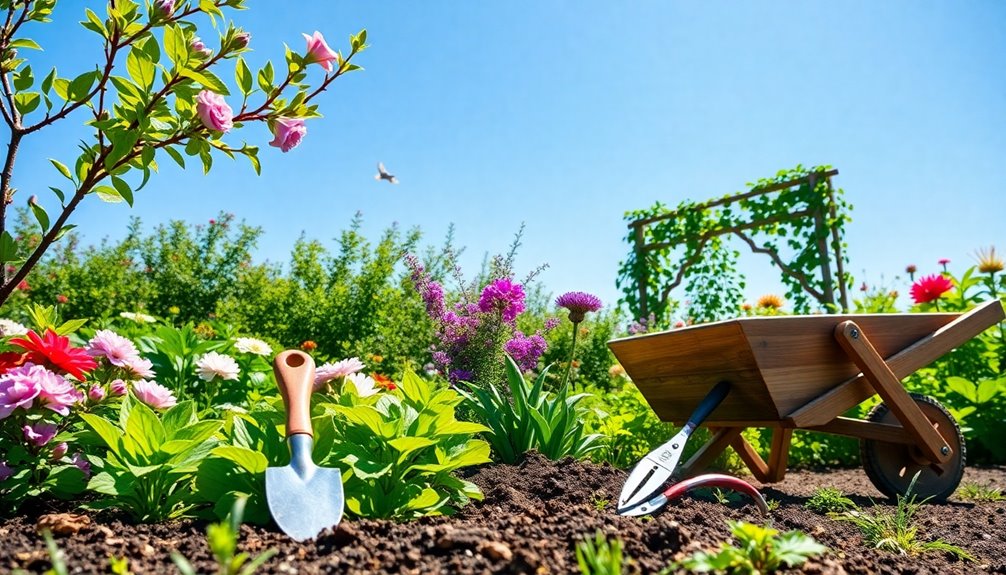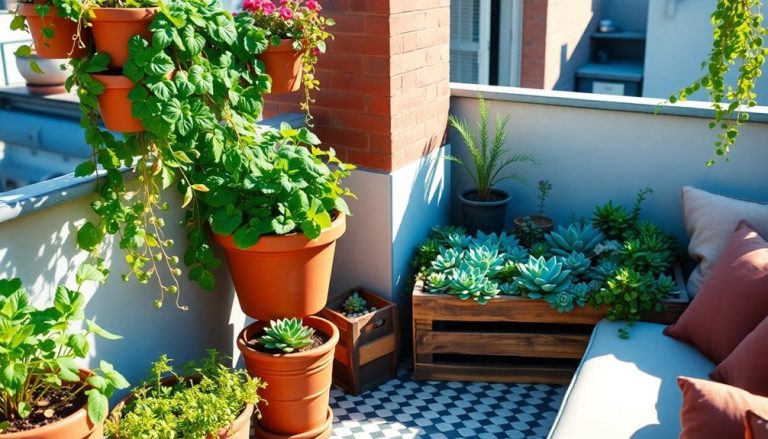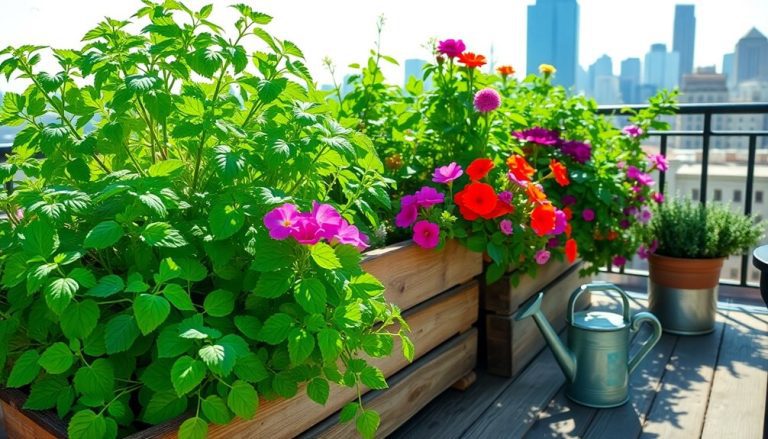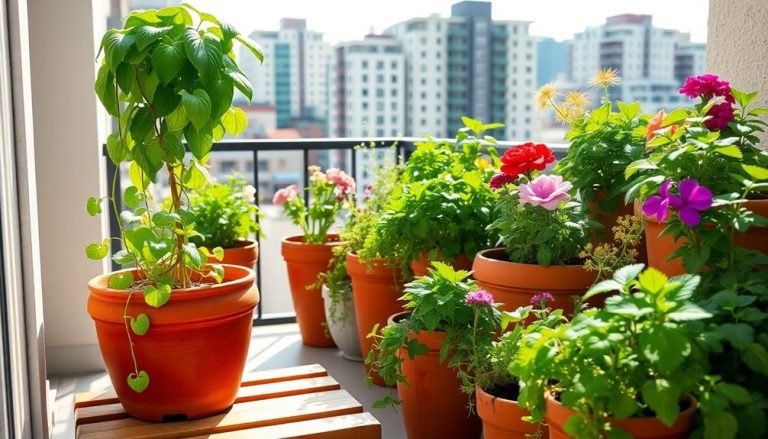When you start spring gardening, assess your garden space by evaluating sunlight, soil quality, and drainage. Clear debris and till the soil to improve aeration. Choose plants suited to your climate, opting for low-maintenance varieties and staggering bloom times for visual interest. Establish a watering routine, aiming for about an inch of water weekly. Fertilize early in the season with a balanced product tailored to your soil's needs. Lastly, stay on top of pests with monitoring strategies and adapt your maintenance schedule as the season progresses. There's a lot more to explore for a successful garden this spring!
Key Takeaways
- Assess and prepare garden space by checking sunlight, soil quality, drainage, and clearing debris to create an optimal planting environment.
- Select plants suited to your climate zone, incorporating a mix of blooming seasons and low-maintenance varieties for a vibrant garden.
- Establish a consistent watering routine, adjusting for rainfall and using efficient methods like soaker hoses or drip irrigation.
- Fertilize with a balanced fertilizer in early spring, tailored to soil nutrient needs, while avoiding over-fertilization.
- Implement pest management strategies by monitoring for pests and encouraging beneficial insects to maintain plant health throughout the season.
Assessing Your Garden Space
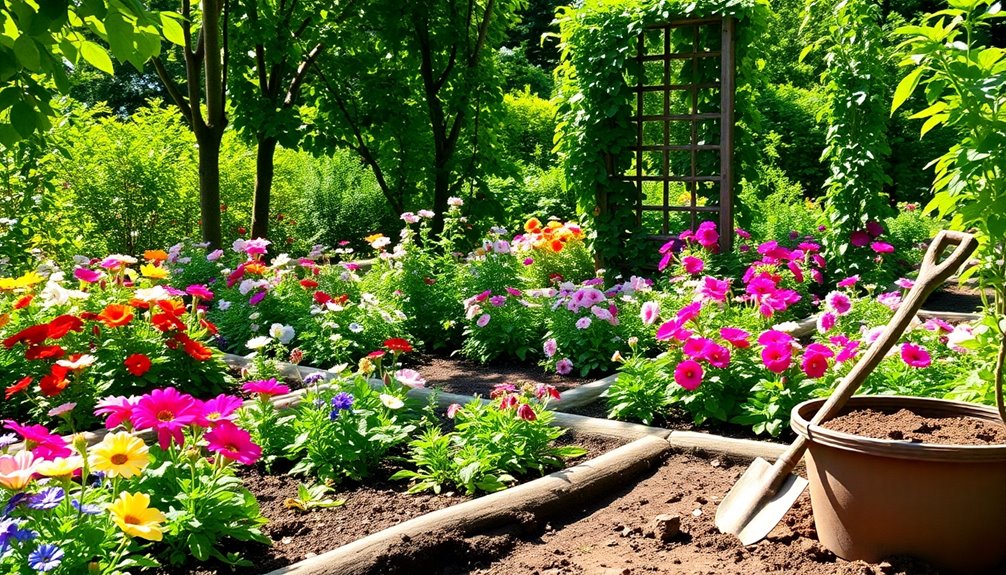
Before you dig into your spring gardening, take a moment to assess your garden space. This step is crucial, as it sets the foundation for a successful gardening season.
Start by evaluating the sunlight your space receives. Observe how many hours of direct sunlight each area gets, since different plants have varying light needs.
Next, consider the soil quality. Grab a handful of soil and check its texture. Is it sandy, clayey, or loamy? This affects drainage and nutrient retention. Don't forget to test the pH level; you want to ensure your soil is suitable for the plants you plan to grow. Using quality soil products can significantly improve the health of your garden. Additionally, incorporating soil moisture sensors can help you monitor the moisture levels in your soil, ensuring that your plants receive the right amount of water.
Also, think about drainage. Does water pool in any areas after rain? Poor drainage can lead to root rot, so make adjustments if needed.
Additionally, assess the space for competing plants, weeds, or invasive species that could hinder your garden's growth.
Finally, consider accessibility. Can you easily reach all parts of your garden for planting, maintenance, and harvesting?
Taking the time to evaluate these factors will help you create a thriving garden that flourishes throughout the spring and beyond.
Selecting Appropriate Plants
With your garden space assessed, it's time to choose the right plants that will thrive in your unique environment. Start by considering your climate zone, as different plants have varying temperature and moisture needs. Research which plants flourish in your area, whether it's sunny, shady, dry, or humid. Additionally, consider incorporating edible flower seeds to enhance both the beauty and functionality of your garden.
Next, think about the size and layout of your garden. If you have limited space, opt for compact varieties or vertical gardening options. For larger areas, you can mix taller plants with low-growing ground covers for visual interest.
Don't forget about maintenance! Choose plants that align with your gardening style and available time. If you prefer low-maintenance options, opt for native plants or drought-tolerant varieties that require less watering and care. Incorporating succulent plants can also provide a stylish and low-maintenance option for your garden.
Consider the blooming seasons as well. Mixing plants with different flowering times ensures your garden stays vibrant throughout the spring and summer.
Finally, think about the colors and textures you want in your garden. A well-thought-out combination will create a stunning visual impact. Taking all these factors into account will help you select plants that not only thrive but also bring you joy all season long.
Soil Preparation Techniques
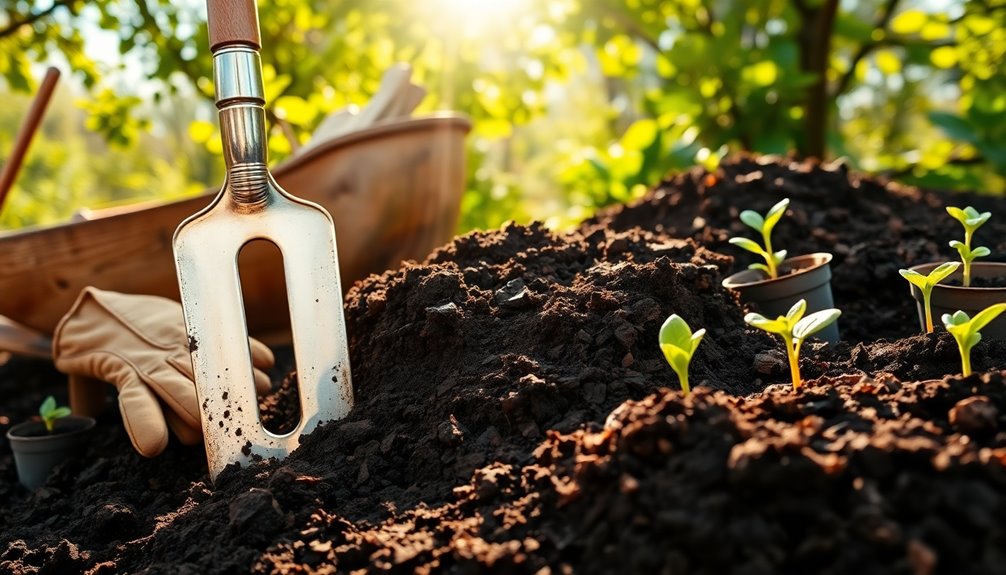
Soil preparation is the backbone of a successful garden, and getting it right sets the stage for healthy plant growth. Begin by testing your soil to determine its pH and nutrient levels. This will help you understand what amendments you might need.
Once you know your soil's condition, clear the area of any debris, weeds, or rocks that could hinder growth.
Next, till the soil to a depth of at least 12 inches. This loosens compacted soil, improving aeration and drainage. As you till, mix in organic matter, like compost or well-rotted manure, to enhance soil structure and fertility. Aim for a balanced mix that promotes healthy microbial activity.
If your soil is too sandy or clayey, consider adding materials like peat moss or sand to improve texture. After tilling, rake the surface to create an even seedbed, ensuring it's level and free of clumps.
Finally, let the soil rest for a few days before planting. This allows any disturbances to settle and enables beneficial organisms to thrive. Additionally, incorporating compost bins into your gardening routine can significantly enhance soil quality and nutrient retention.
With well-prepared soil, you're ready to plant and watch your garden flourish!
Fertilizing for Healthy Growth
Fertilizing your garden is essential for promoting healthy plant growth and ensuring vibrant blooms. To get the most out of your fertilization efforts, you'll want to consider a few key points.
Here are four important tips for effective fertilizing:
- Choose the Right Fertilizer: Select a balanced fertilizer that contains equal parts nitrogen, phosphorus, and potassium, or tailor it to the specific needs of your plants.
- Test Your Soil: Before applying any fertilizer, conduct a soil test to determine nutrient levels and pH. This will help you understand what your garden needs.
- Apply at the Right Time: Timing is crucial. Apply fertilizer in early spring as plants begin to grow, ensuring they've the nutrients they need during their active growth period.
- Follow the Instructions: Always follow the packaging instructions for application rates and methods. Over-fertilizing can harm plants and lead to nutrient runoff.
Establishing a Watering Routine
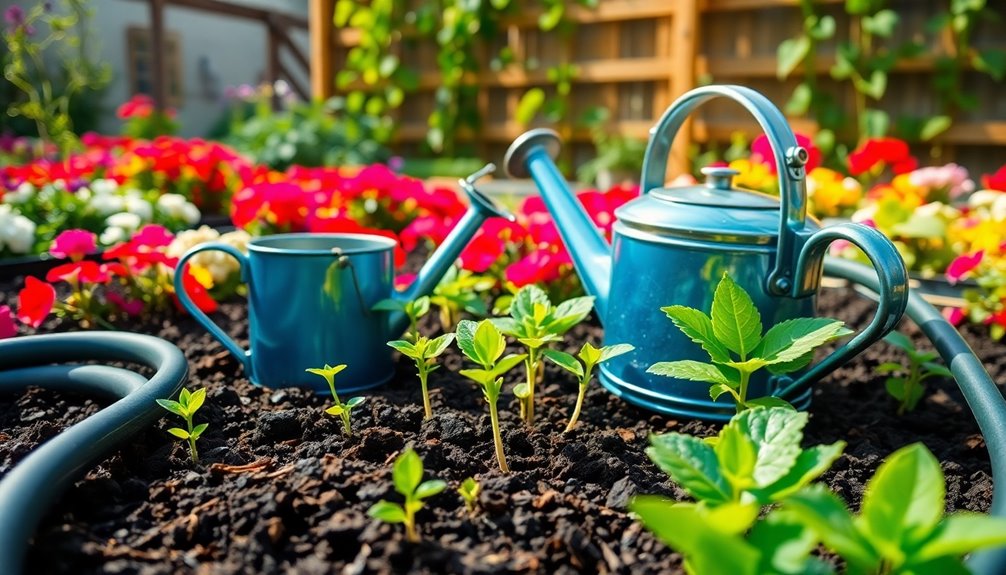
How can you ensure your garden thrives throughout the growing season? Establishing a consistent watering routine is key.
First, assess your garden's specific needs based on the plants you've chosen. Different plants have varying water requirements, so it's crucial to know what each one needs.
Set a schedule that works for your garden and climate. Early mornings are often the best time to water, as this allows moisture to soak in before the heat of the day causes evaporation. Aim for about one inch of water per week, but adjust based on rainfall and temperature.
Don't forget to check the soil moisture regularly. Stick your finger about an inch into the soil; if it feels dry, it's time to water.
Consider using a soaker hose or drip irrigation system to deliver water directly to the roots, minimizing waste.
Lastly, pay attention to signs of underwatering or overwatering, like wilting or yellowing leaves.
Pest and Weed Management
With a proactive approach to pest and weed management, you can protect your garden's health and ensure its vibrant growth.
To keep pesky invaders at bay and maintain your plants' well-being, follow these essential steps:
- Monitor Regularly: Keep an eye on your plants for early signs of pests or diseases. Catching issues early makes them much easier to manage.
- Use Natural Predators: Introduce beneficial insects like ladybugs and lacewings. They can help control aphid populations and other harmful pests.
- Apply Mulch: Spread organic mulch around your plants. It helps suppress weeds, retain moisture, and improve soil health, making it harder for unwanted plants to thrive.
- Implement Crop Rotation: Change the location of your plants each season. This practice disrupts pest lifecycles and reduces the likelihood of infestations.
Planning Seasonal Maintenance

As you prepare for the changing seasons, planning seasonal maintenance for your garden is crucial to ensure its continued health and productivity. Start by assessing your garden's current condition. Identify any areas that need attention, such as soil quality, plant health, or pest problems.
Next, develop a schedule for maintenance tasks throughout the season. Here's a simple table to help you visualize your seasonal maintenance plan:
| Task | Timing |
|---|---|
| Soil Testing | Early Spring |
| Planting New Seeds | Mid Spring |
| Mulching | Late Spring |
| Pruning Established Plants | Early Summer |
| Pest Monitoring | Throughout Season |
Make sure to allocate time for each task, as consistency is key to a thriving garden. Don't forget to adjust your plan based on weather patterns and any unexpected challenges. By staying organized and proactive, you'll cultivate a vibrant garden that flourishes all season long. Remember, a little planning now can save you time and effort later, ensuring your garden remains a source of joy and productivity.
Frequently Asked Questions
What Tools Are Essential for Spring Gardening?
When you're gearing up for spring gardening, you'll need essential tools like a spade, trowel, pruning shears, and a garden fork. Don't forget gloves and a watering can to keep everything thriving!
How Do I Determine My Garden's Sunlight Exposure?
To determine your garden's sunlight exposure, observe how shadows dance across your yard throughout the day. Track sunlit hours, noting areas that bask in light versus those that linger in shade. It's your garden's secret!
When Is the Best Time to Start Planting?
The best time to start planting depends on your local climate. Generally, you should begin after the last frost date. Check your area's planting calendar to ensure your plants thrive during the growing season.
Can I Start Seeds Indoors Before Spring?
Absolutely! Starting seeds indoors before spring gives you a head start that feels like having your own secret garden. Just make sure you've got enough light and warmth, and you're ready to grow!
How Do I Attract Beneficial Insects to My Garden?
To attract beneficial insects, plant a variety of flowers like marigolds and sunflowers. Also, avoid pesticides, provide water sources, and create diverse habitats with native plants. These strategies'll encourage helpful pollinators and natural pest controllers.
Conclusion
As you dive into spring gardening, think of your garden as a blank canvas waiting for your creative touch. By assessing your space, selecting the right plants, and nurturing your soil, you'll cultivate a thriving oasis. Don't forget to establish a watering routine and manage pests effectively to keep your garden flourishing. With seasonal maintenance in mind, you'll watch your efforts blossom into a vibrant sanctuary that brings joy and beauty to your home. Happy gardening!

